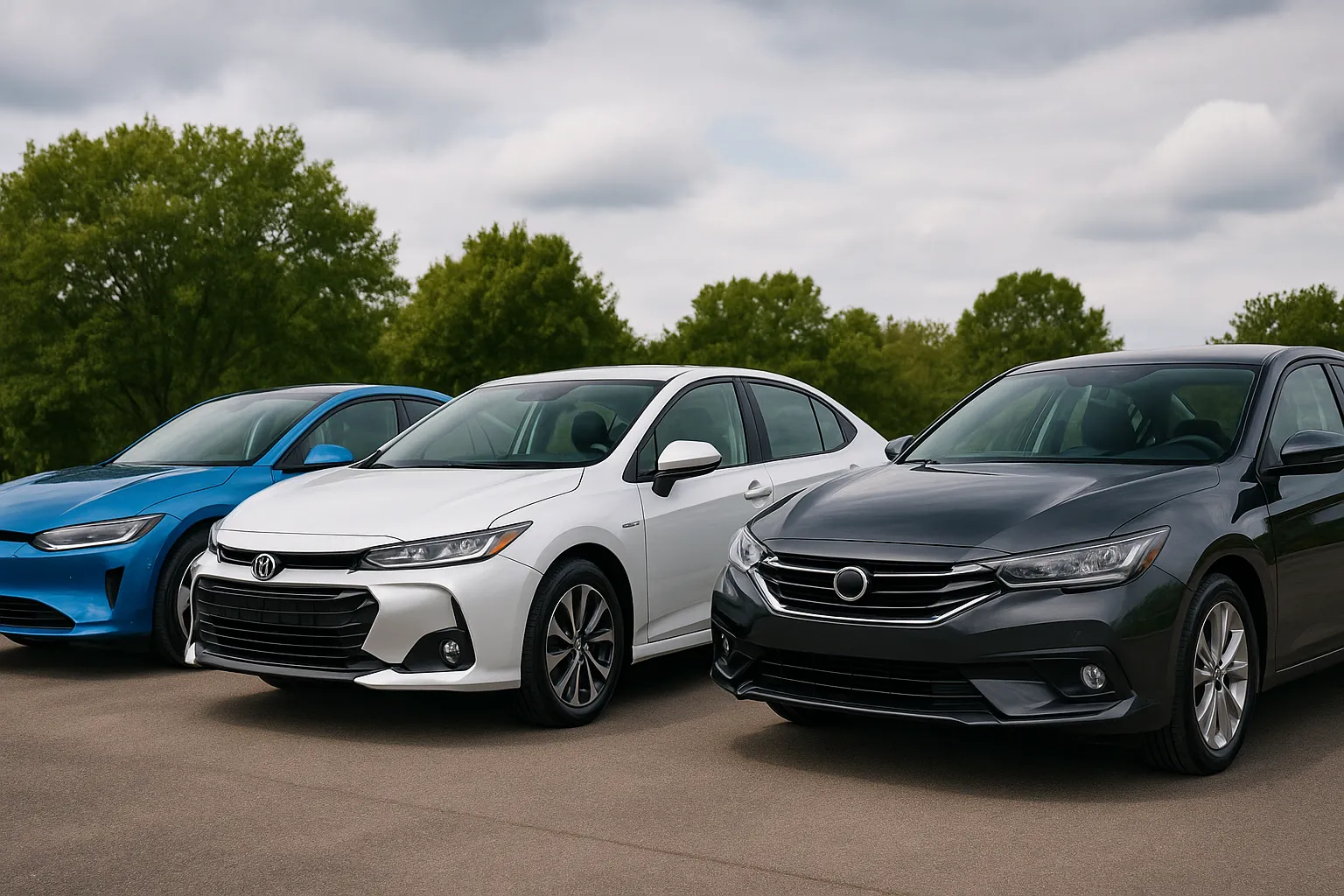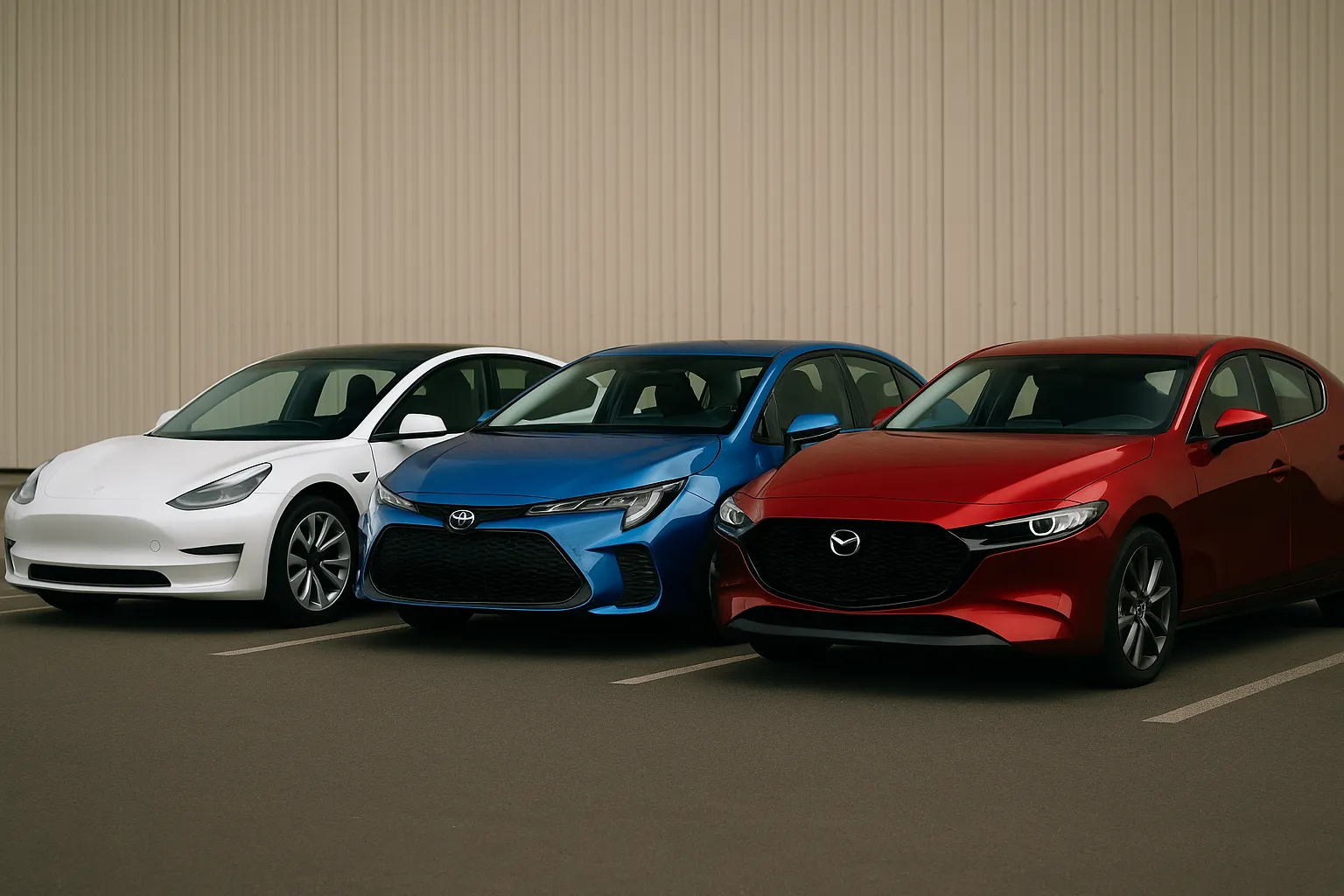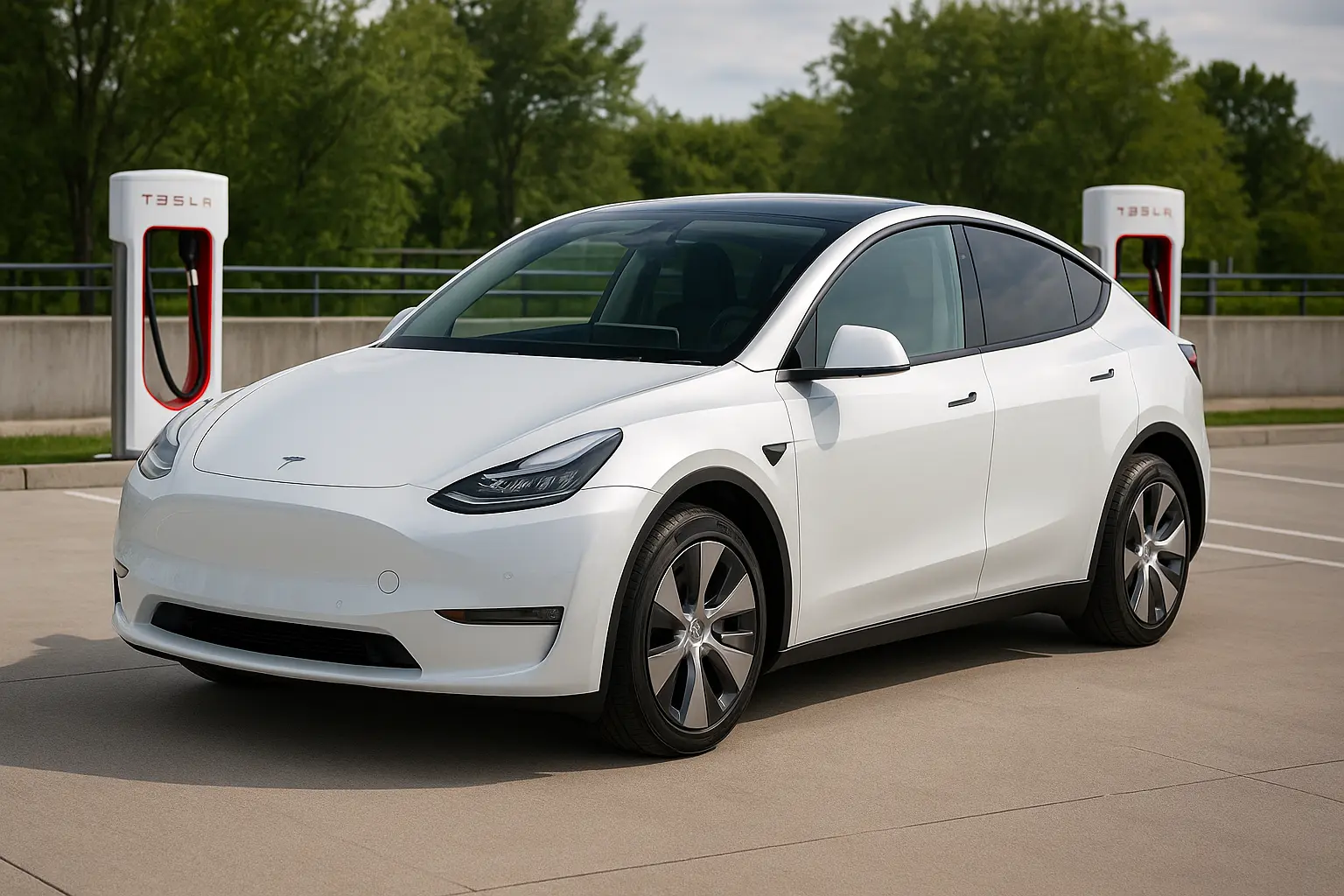Electric vs Hybrid vs Petrol – What’s the Right Choice for You in Australia?
Choosing the right car in 2025 can feel overwhelming, especially with so many drivetrain options now available. Whether you’re leaning towards electric vehicles (EVs) for their eco-credentials, hybrid cars for their balanced efficiency, or trusty petrol cars for their familiarity and availability, the decision comes down to your budget, driving habits, and long-term goals.
In this blog, we’ll break down:
The difference between EVs, hybrids, and petrol cars
Pros and cons of each type
Running costs and maintenance in Australia
Suitability for city, highway, or rural use
Best use cases and who each option is right for
Let’s dive in.

1. Understanding the Powertrains
Electric Vehicles (EVs)
EVs are fully powered by electricity using a battery and electric motor. They must be charged via an EV charger or power outlet.
Key characteristics:
No petrol/diesel engine
Zero tailpipe emissions
Quiet, smooth performance
Recharge via home or public chargers
Popular 2025 EVs in Australia include the Tesla Model 3, BYD Seal, Kia EV6, Hyundai Ioniq 6, and Polestar 2.
Hybrid Cars
Hybrid cars combine a petrol engine with an electric motor and battery. Some charge themselves (HEVs), while others (PHEVs) can be plugged in for more electric range.
Two types of hybrids:
HEV (Hybrid Electric Vehicle): Charges on the go (e.g., Toyota Corolla Hybrid)
PHEV (Plug-in Hybrid Electric Vehicle): Can be plugged in and driven short distances on electricity alone (e.g., Mitsubishi Outlander PHEV)
Petrol Cars
These use traditional internal combustion engines (ICE) that run on petrol. Most vehicles on Aussie roads still fall into this category.
Petrol car perks:
Easy refuelling
Familiar mechanics
Lower upfront cost (in most cases)
Widely available servicing and parts
2. Upfront Costs in Australia – What You’ll Pay to Own
Let’s compare the purchase prices of typical 2025 models:
| Vehicle Type | Example Model | Starting Price (AUD) |
|---|---|---|
| Electric | BYD Dolphin EV | $38,890 |
| Electric | Tesla Model 3 | $61,900 |
| Hybrid | Toyota Corolla Hybrid | $31,990 |
| Hybrid (PHEV) | Mitsubishi Outlander PHEV | $57,290 |
| Petrol | Mazda CX-5 Petrol | $36,990 |
| Petrol | Hyundai i30 Sedan | $29,000 |
Verdict: Petrol cars are still the most affordable to buy upfront. Hybrids add some premium, while EVs vary widely depending on range, features, and brand.
3. Running Costs – Fuel vs Charging
Electric Vehicles
Charging your EV is significantly cheaper than petrol, especially if you charge at home during off-peak hours.
Home charging: ~$0.20 per kWh
Cost per 100km: ~$4–$6
Public fast charging: ~$0.60 per kWh
Example: A Tesla Model 3 uses about 13kWh/100km = $2.60 (home) or $7.80 (fast charger)
Hybrid Cars
Hybrids still use fuel but are far more efficient. You can get fuel economy of 3.5–5.0L/100km depending on the model.
Petrol Cars
Average fuel cost in 2025: ~$2.10/L (varies by region)
A typical petrol car may use 7–10L/100km = $14–$21 per 100km
Verdict: EVs are clearly the cheapest to run long-term, especially with home charging. Hybrids offer good efficiency. Petrol is the most expensive.
4. Maintenance Costs – Which Is the Most Reliable?
| Vehicle Type | Maintenance Complexity | Average Yearly Cost (AUD) |
|---|---|---|
| Electric | Low (no oil, fewer parts) | $300–$500 |
| Hybrid | Moderate (dual systems) | $400–$700 |
| Petrol | High (fluids, moving parts) | $600–$1000 |
Electric cars have fewer moving parts (no exhaust, gearbox, or timing belts), making them cheaper to service.
Hybrids have two systems, meaning they require slightly more care but still less than petrol.
Petrol cars demand more regular servicing (oil changes, spark plugs, belts).
5. Range and Refuelling Convenience
Petrol Cars
Range: 600–900km
Refuelling: 3–5 minutes at any servo in Australia
Hybrids
Range: 800–1000km for HEVs
Refuelling: Like a petrol car
Electric-only range (PHEVs): 40–80km before switching to petrol
Electric Cars
Range: 300–600km depending on battery size
Charging time:
Home charger (7kW): 8–12 hours
Fast charger (50kW+): 30–60 minutes
Verdict: Petrol cars and hybrids win for long road trips and rural use. EVs are catching up but best suited for urban dwellers with home charging.
6. Environmental Impact – Going Green
| Vehicle Type | Tailpipe Emissions | Production Emissions | Overall Green Score |
|---|---|---|---|
| Electric | None | High battery impact | ★★★★★ |
| Hybrid | Low (some petrol) | Moderate | ★★★★☆ |
| Petrol | High CO₂ output | Standard | ★★☆☆☆ |
Electric vehicles are the cleanest to operate, especially if charged with renewable energy. Hybrids offer a good middle ground. Petrol cars are the worst in terms of emissions.
7. Government Incentives in Australia – 2025
Electric Vehicles:
Stamp duty exemptions in VIC, NSW, and ACT
Rego discounts and rebates up to $3,000 in select states
Luxury Car Tax (LCT) threshold raised for EVs ($89,332)
Hybrid Cars:
Some regulation perks but limited rebates
PHEVs sometimes included in EV perks depending on the state
Petrol Cars:
No incentives; may face rising costs as Australia targets net-zero by 2050
8. Resale Value – Which Holds Value Better?
EV resale value is improving thanks to growing demand and better battery durability. Hybrids like the Toyota Corolla Hybrid retain excellent value due to reputation and fuel savings. Petrol cars still do well but may decline as fuel prices rise and cities phase in emissions restrictions.
9. Charging Infrastructure vs Fuel Stations
Charging stations: Over 6,000 chargers across Australia and growing
Fuel stations: 6,500+ nationwide and well-established
Urban EV users won’t struggle to find chargers, but rural areas still favour petrol/hybrid.
10. Best Picks in 2025 – Electric vs Hybrid vs Petrol
| Category | Electric Pick | Hybrid Pick | Petrol Pick |
|---|---|---|---|
| Budget Daily Car | BYD Dolphin | Toyota Corolla Hybrid | Kia Cerato |
| Family SUV | Tesla Model Y | Toyota RAV4 Hybrid | Mazda CX-5 |
| Luxury Car | BMW iX3 | Lexus NX 350h | Audi Q5 |
| Long-Distance Driving | Hyundai Ioniq 6 | Mitsubishi Outlander PHEV | Subaru Outback |
| Rural Driving | Kia EV9 (if charged home) | Toyota Kluger Hybrid | Toyota Prado |
11. What’s Best for You?
Choose Electric if:
You mostly drive in cities or suburbs
You have home charging access
You want low running and maintenance costs
You’re ready to future-proof your purchase
Choose Hybrid if:
You do a mix of city and highway driving
You’re concerned about fuel efficiency
You’re not ready for full EV commitment
You want practical range and lower emissions
Choose Petrol if:
You live in rural or remote areas
You want simple refuelling anywhere
You prefer cheaper upfront costs
You’re not ready to deal with charging
Final Thoughts
In 2025, Australian car buyers are spoilt for choice. EVs are growing rapidly, with incentives and tech improvements making them more attractive than ever. Hybrids remain a sweet spot of performance and efficiency. Petrol cars, while familiar, are slowly becoming less viable as running costs rise and eco-consciousness grows.
Choosing between electric, hybrid, and petrol isn’t just about the environment — it’s about how you live, drive, and budget. Take time to evaluate your needs, run the numbers, and test drive options across all three categories before you decide.
Leave a comment
Your email address will not be published. Required fields are marked *




